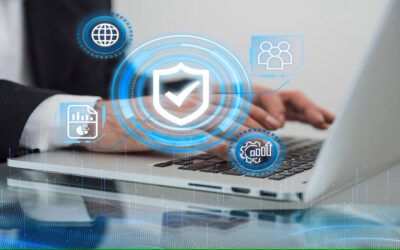Introduction
Securing your WordPress website from cyber threats is vital in today’s digital world. Regular updates play a key role in this defense strategy. In this guide, we’ll explore why updating WordPress is essential for protecting your site. We’ll discuss how updates help prevent malware attacks and improve performance, ensuring your website remains secure and reliable.
Mitigate Security Risks with WordPress Updates
WordPress updates are crucial for patching security vulnerabilities in core software, themes, and plugins. Applying these updates promptly helps safeguard your website against exploitation by malicious actors aiming to capitalize on these vulnerabilities.
Prevent Malware Intrusions
Outdated WordPress components are vulnerable to malware infections, posing a significant risk to website security. Regular updates fortify your site’s defenses by closing known security gaps, preventing hackers from injecting malicious code and compromising its integrity.
Shield Against Brute Force Attacks
WordPress sites are frequent targets of brute force attacks, where hackers attempt unauthorized access by guessing passwords. Updated WordPress installations come fortified with security enhancements, thwarting such attacks and safeguarding your site’s login credentials.
Ensure Seamless Compatibility
WordPress updates not only bolster security but also enhance compatibility with modern web technologies. By keeping your WordPress installation up-to-date, you ensure seamless functionality across browsers, server configurations, and third-party integrations.
Optimize Performance and Reliability
Beyond security enhancements, WordPress updates include performance optimizations and bug fixes. These improvements enhance your website’s stability and speed, delivering an optimal user experience and bolstering its reliability.
Stay Vigilant Against Emerging Threats
Cyber threats evolve constantly, necessitating proactive measures to protect your website. Regular updates keep your WordPress installation, themes, and plugins resilient against emerging threats, ensuring robust security in an ever-changing landscape.
Implement Robust Security Practices
Beyond updates, enforce security best practices like strong passwords and two-factor authentication. These measures fortify your website’s defenses, reducing susceptibility to cyber attacks and enhancing overall security posture.
Back Up Your Website Strategically
Regular backups are essential for mitigating the impact of security breaches or unforeseen events. By maintaining up-to-date backups, you can swiftly restore your website to a previous state, minimizing downtime and data loss.
Monitor Security Proactively
Deploy monitoring tools and techniques to detect and respond to security threats promptly. Utilize security plugins and web application firewalls to monitor your website’s security posture, enabling rapid response to potential threats in real-time.
Educate Website Administrators
Empower website administrators with the knowledge and skills to recognize and address security threats effectively. Educate them on security best practices, phishing awareness, and suspicious activity detection, enabling them to contribute actively to your website’s security defenses.
Conclusion
Prioritizing WordPress updates is crucial for maintaining a safe and robust website. By keeping your site up to date, you defend against known vulnerabilities and ensure compatibility with emerging technologies. Alongside security measures like backups and monitoring, regular updates form a critical part of your site’s protection. Educating administrators enhances this defense, creating a strong shield against cyber threats now and in the future.

Search
Categories
- AI 3
- Analytics & Data Science 16
- Blogs 8
- Brand Identity 23
- Business 10
- CMS & LMS 22
- Development 1
- Digital Marketing 20
- Digital Signage 12
- E-commerce 6
- Education & E-Learning 1
- Enterprise solution 15
- Events 2
- Food & Grocery 1
- Internet of Things 9
- Mobile App Development 15
- News 5
- Open Source Development 12
- SEO Search engine optimization 2
- Software 1
- Staff Augmentation 3
- Uncategorized 24
- Web Design 1
- Web Development 19
- Web Security and Performance 19
- Website Development 2
- WordPress Development 3
Recent Posts
-
Les avantages de choisir un casino proposant des free spins attractifs pour les joueurs
-
Arlequin Casino et ses promotions exclusives qui transforment les jeux en ligne
-
Tendances actuelles des casinos Neosurf et leur impact sur l’industrie du jeu
-
مقارنة شاملة بين كازينوهات قطر التي تعتمد على استخدام VPN
-
Les bénéfices de l’utilisation de Paysafecard dans les casinos en ligne sans soucis



